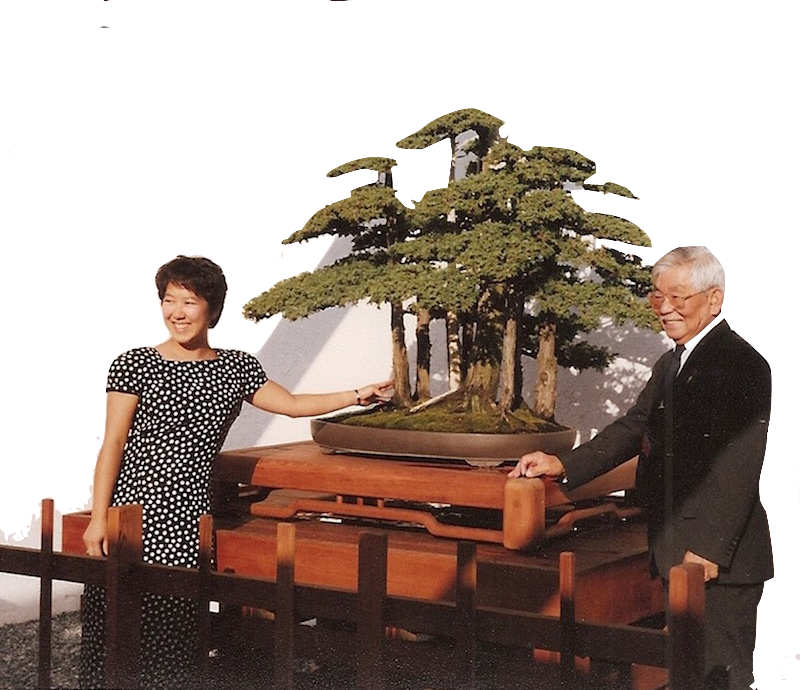GENERAl APPROACH TO BONSAI by John Y Naka
This step-by-step pictorial is designed to guide beginners through the mechanical process of cutting, shaping and transplanting fairly simple bonsai material for the first time. It makes the assumption that the reader has already done some research and has a basic understanding of the fundamental shaping concepts used in the art of bonsai such as:
-
Select hardy plants. Conifers are mostly used. (specially juniper which is very good .except for the variegated variety which is not loo hardy and actually not seen in nature. The pine family is hardy but manny times lack good workable branches, and is slow growing. For the beginner it lacks many elements. There are mans hardy deciduous trees too, but for basic styling they are later materials fur workshop.
-
It is prat-heal to start with a snall size, but not too small. so called 1 gallon urn or a size 118 consaci &Ted good. ‘flee finished size will he from 6 to 10 inches in height.
-
Rootage: The root should spread in all directions. The roots should be divided at the base of the trunk i see peg( 18). Trunk: The trunk should be tapered as it goes upwinth. And requires many ele-ments (sae page 18). Apes; Esery tree should haw an apex. Evert after the tip has been rut a proper branch should be brought up to replace the apes (see page 18). Primary briow.h. Should be thick and full in the lower portion. and get smaller and thinner towards the top. Beam-hes be growing in all directions with plenty of secondary branches (see page 21). Secondary and other branches. The secondary branch should have plenty of foliage from the base. In conifers, select a tree that has short needles or with com-pact foliage. If it. is a deciduous tree, choose one that has good prospects for change during the season; such as flowers.. fruits, berries or leave,: which rhange isolors in the spring or autumn. Also, one that shows the fine twig structures in a winter view can be both attractive and interesting
-
Training position: Bonsai must be trained so that the middle of the tree is at eye level. Do not look up at the tree from a sitting position nor look down on it from a standing position.
Sourse : https://minnesotabonsaisociety.org/wp-content/uploads/2017/10/beginnerbasics_small.pdf
